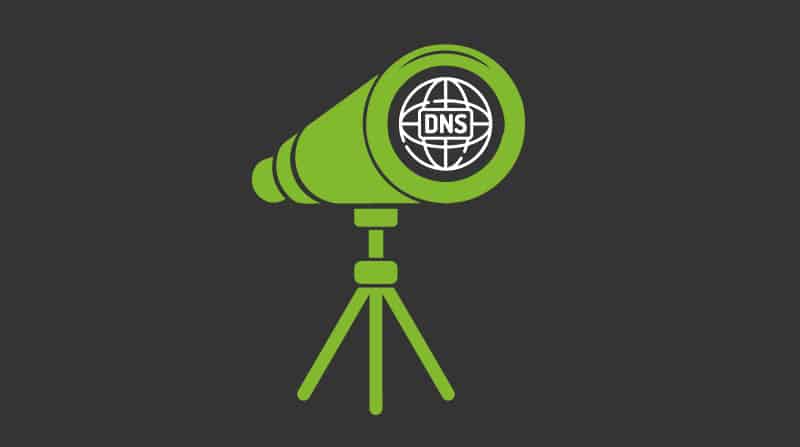What is DNS? Learn about its advantages and disadvantages
What is DNS? DNS is the Domain Name System, or the hierarchical system of nomenclature that orders the names of members who connect to IP networks, such as the Internet.
In this article we will briefly learn what DNS is, how it works, what it is used for and some of its advantages and disadvantages. What is DNS? Shall we begin?
What is DNS?
Although it also fulfils other “less popular” functions, DNS is a system that organizes web domain names and makes them more “intelligible” for all those who want to connect to the network.
As you probably already know, each of the devices that connect to the network has an IP number (Internet Protocol), which is the number that identifies that device as part of the network. It is something like what our physical address would be (our home address, for example), but in the network.
What happens with these numbers is that, like phone numbers, they are not usually easy to remember. They follow a structure like the following: XX.XXX.XX.XXX
And while it’s true that we usually remember or store phone numbers with a certain simplicity, imagine if you had to do the same with any web domain you wanted to access. The list would end up being endless and our management of the network would be much more cumbersome.
What is DNS? Let’s take an example.
Imagine you want to connect to Google. If there weren’t a system like DNS, every time you wanted to connect to Google you would have to search and type in a heavy string of numbers. And the same with any other place you’d like to access.
What the DNS system does is “to translate” the names we give to the domains to the IP language, so that the devices (client and server, in this case) can communicate satisfactorily without the need for us, as users, to know the IP numbers of each domain.
How does DNS work in practice?
DNS uses a hierarchical database that contains information about domain names.
If, for example, you try to access a web address from home, the DNS system goes through a whole series of steps.
Imagine that you make a request that requires a DNS search (for example, you type the name of a web page in the address bar of your browser). The first thing your computer will do is to send a request to the local DNS server of the operating system. This checks to see if the answer you need is in your computer’s cache (for example, if you’ve recently accessed that page, it’s likely that the information is still stored).
If it is not found in the cache, the request is sent over the Internet to one or more DNS servers, which will generally be those made available to its users by the Internet service provider you have contracted. If the required information is not found on these DNS servers either, the request will be sent to other external servers.
These are the steps that are followed, but how is the search structured? Let’s look at a key idea.
As we said before, the DNS search is hierarchical, and this is what explains the structure of domain names.
Domain names are divided into two or more parts, called tags, which are separated by dots. (For example, blog.pandorafms.org).
The right label is called the top-level domain (the “org” in the example). The following on the left are called subdomains, and the one on the left most often expresses the name of the machine (it does not refer to a particular physical machine). The DNS system will use all this information to rank your searches.
Some advantages and disadvantages of the DNS system
For all of the above, you can already assume that the main advantage of the DNS system is that it greatly facilitates the use of the Internet, which would be much heavier and more difficult if we had to know all the IP addresses we wanted to access. But it’s not the only one.
Another considerable advantage is, for example, the stability it provides. For different reasons, IP addresses (e.g. servers serving a web page) may change, so if you want to access a website you not only need to know the IP address, but this information should also be up to date. If we had to do it ourselves, we would be faced with a very laborious task. On the contrary, the DNS system is in charge of updating the IP addresses in a much faster and constant way, avoiding an important effort.
However, like everything in this life, the DNS system also has some drawbacks, such as those related to security. For example, there is the possibility of one of the famous “DNS attacks”, in which the attacker replaces the real DNS address with a fraudulent one, with the aim of deceiving users and directing them (without them knowing it) to malicious addresses, usually with very bad intentions, such as taking over their bank details or other sensitive data. In addition, there are other types of fraudulent practices, such as the creation of domains very similar to the real ones (for example, replacing the letter “l” in the name with the number “1”) that can mislead users and direct them to harmful websites.
DNS Monitoring
At this point, do you want to find out what DNS and monitoring have to do with it? You can see it in this article by our mate Alexander De La Rosa. Enjoy it!
Pandora FMS’s editorial team is made up of a group of writers and IT professionals with one thing in common: their passion for computer system monitoring. Pandora FMS’s editorial team is made up of a group of writers and IT professionals with one thing in common: their passion for computer system monitoring.
















